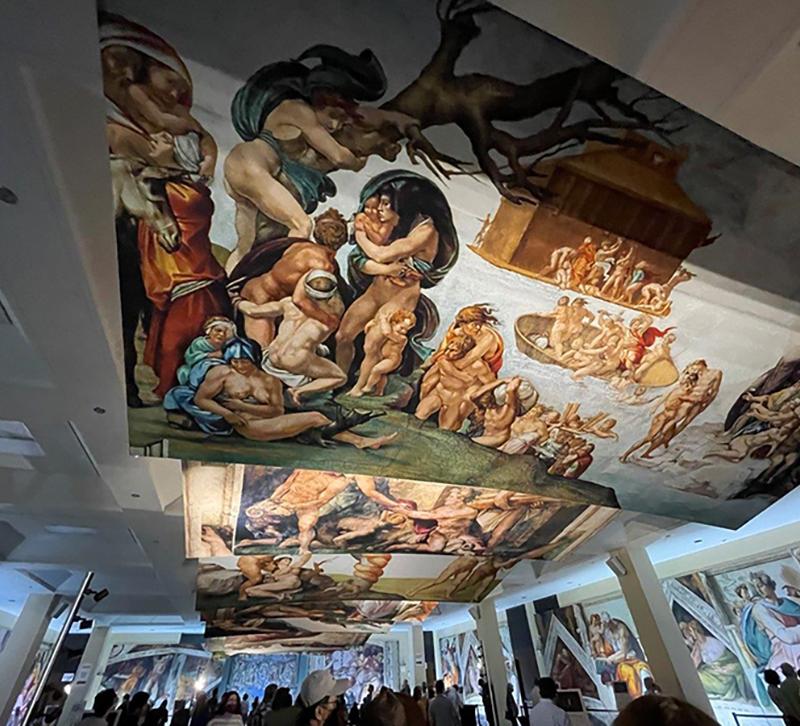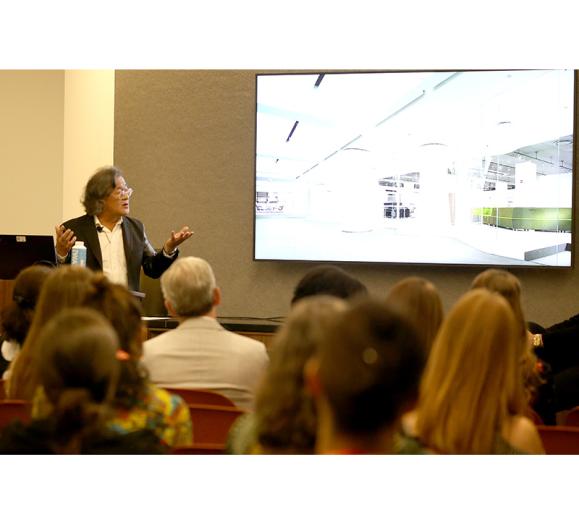I went to see a traveling exhibit of the ceiling in the Sistine Chapel, painted by Michaelangelo, which had come to San Francisco. I was lucky enough to see the real thing in Italy, but the ceiling was 133 feet above the floor. We could only really see the large figures and not much of the detail. Here was a chance to feel like you were just six feet away to really take in this amazing creation.
The show was extremely popular and COVID restrictions were still in place, so reserved time-stamped tickets had to be purchased by attendees in advance. Upon arrival we had to wait a long, properly social distanced line until it was our time slot to enter. Once you were inside you could roam around for as long as you cared to.
All the sections of the ceiling of the Sistine Chapel were photographed by the creators of the exhibit and then blown up to full size. It was surprising how vibrant the colors were and how much detail there was in each of the individual frescoes, considering how little could be seen when viewed from so far away in the actual chapel. It was also interesting that the figures depicted in the curved sections of the Sistine Chapel ceiling were altered by Michelangelo so that they would appear proportionally correct when viewed from below.
Of course, the lighting came under my scrutiny. I could not help myself. Redesigning spaces in my head is a casualty of the profession. A good friend, who is a kitchen designer, says that all she sees are countertops and toe kicks wherever she goes. It just comes with the territory. For this exhibit, all the lighting was portable which makes sense since this is a traveling show. Was it great lighting? Well, I would give the effectiveness of the design a 7 out of 10.
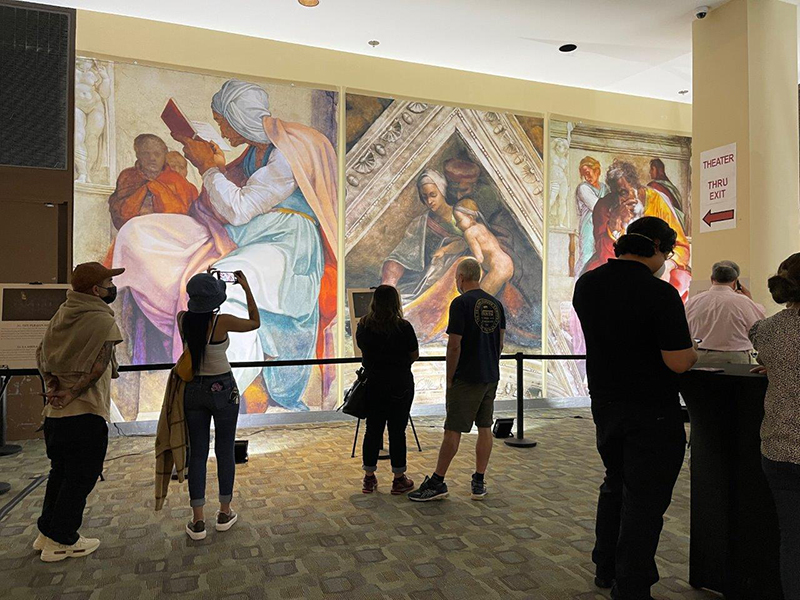
In this first image (shown above) you can see the panels that line the perimeter of the exhibition space. Floor mounted, the exhibition designer used LED flood lights to wash the artwork. It worked well, because the paper had a slight sheen which would have been visible if it had been illuminated from above. The panels averaged 12 feet tall and 9 feet wide. A single 8“x 8“ luminaire did a pretty good job of evenly illuminating the art. Some panels were double that width and required two luminaires.
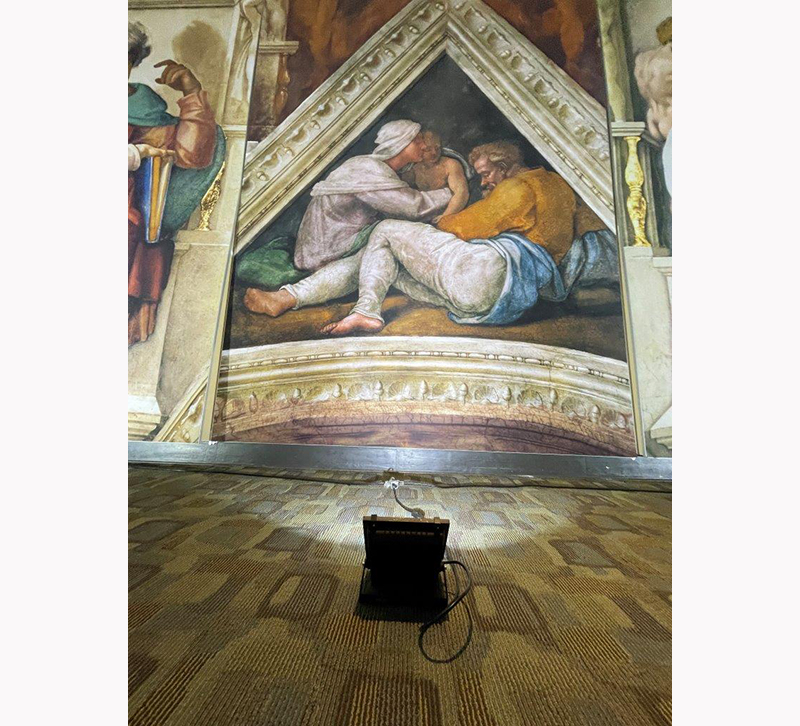
Here is a close-up of one of the wall washers (shown above). You can see that there is an adjustable bracket base that allows the fixture to be aimed by the design team. The color temperature is 3000° kelvin, which is the color of halogen light. This retains the warmth of incandescent lighting but also illuminates the cooler colors without giving them too much of a yellowish hue. Having a CRI of 92 also adds to the richness of color rendition. There was also a surprisingly good lumen output of 7400 lm, which is equivalent to the use of four 100 watt incandescent floods.
Before the advent of LEDs, this exhibit would have either been lit by the designer with halogen lighting which would have produced a lot of heat, considering the number of panels. Or it would have been illuminated with fluorescent lighting, which at best had a CRI of 80, and would have rendered the colors flat and dull.
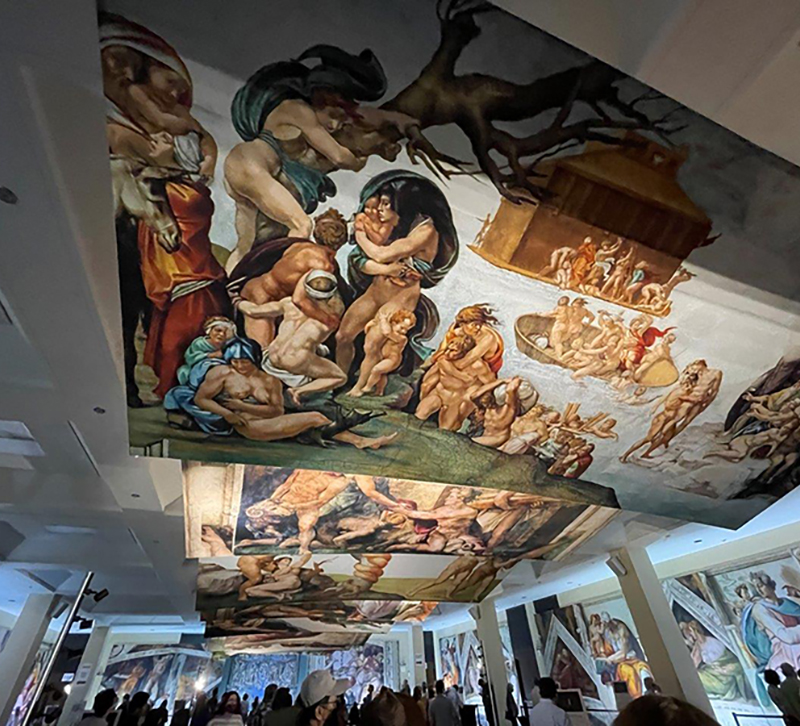
The panels that are located along the apex of the actual Sistine Chapel ceiling were suspended from the center of the room (shown above). There were directional LED lights, mounted on vertical poles, which were used by the design team to illuminate this set of panels. They did a fairly good job but were a bit glaring and tended to hit people right in the eye if they walked between the art and the light source. It would have been nice if they had baffles or snoots to help hide the source of the illumination.
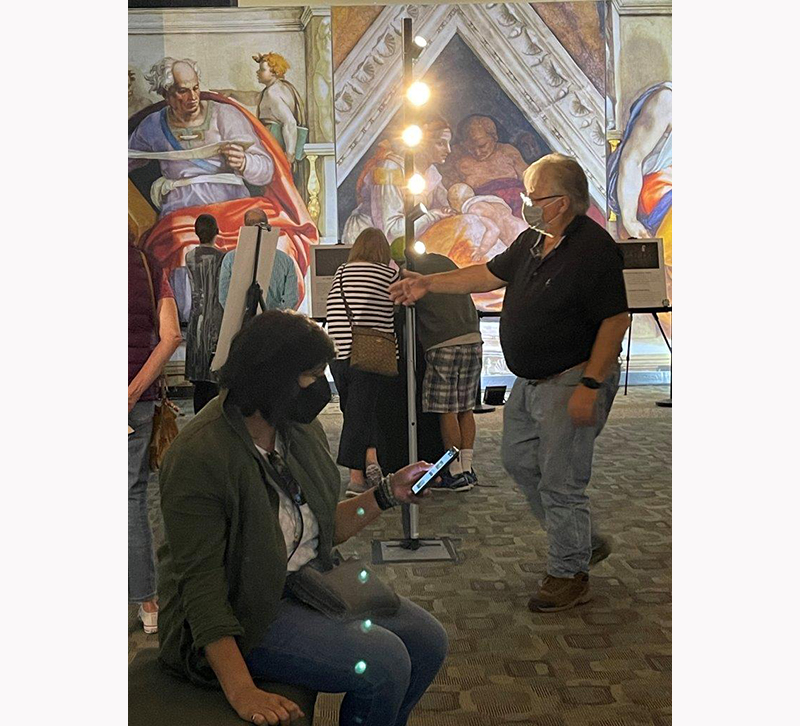
Here is a shot of the luminaire (shown above). These adjustable heads are using LED PAR lamps with an output of 1100 lm. This is equivalent to a 75 W incandescent PAR lamp. You can see from the shot how uncomfortably bright they can be. These had a color temperature of 3000K and a CRI of 90.
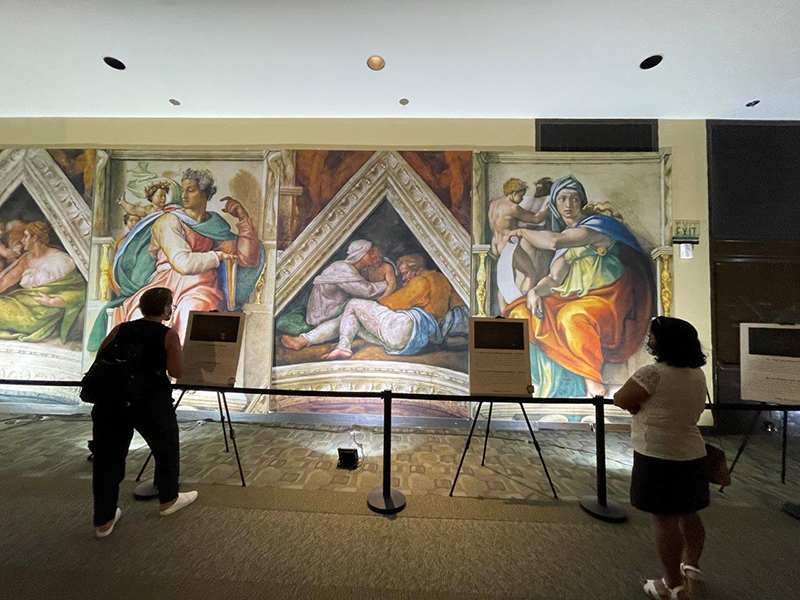
What surprised me the most is that the signage (shown above) had no illumination on it at all. It was very hard to read even when you were standing very close to it. I believe it was because my eyes were adjusting to the surrounding brightness which made the signage feel even darker.
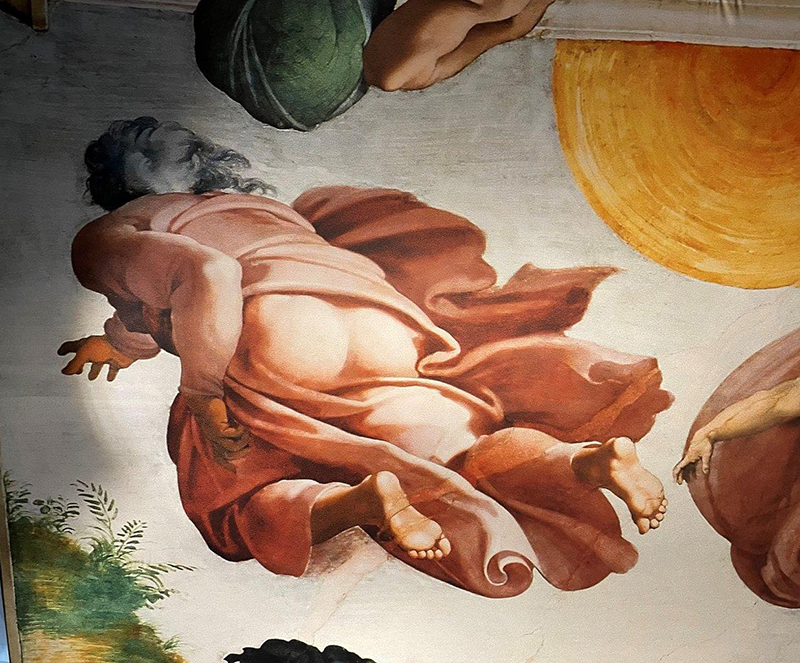
It was fascinating to read all the information about who is depicted by the artist in each of these frescoes and how these figures related to each other and numerous biblical stories. The big wow moment for me was that in one of the center frescoes there is a depiction of God’s butt (shown above). I do not know how Michelangelo got away with it. It does seem a bit cheeky.



